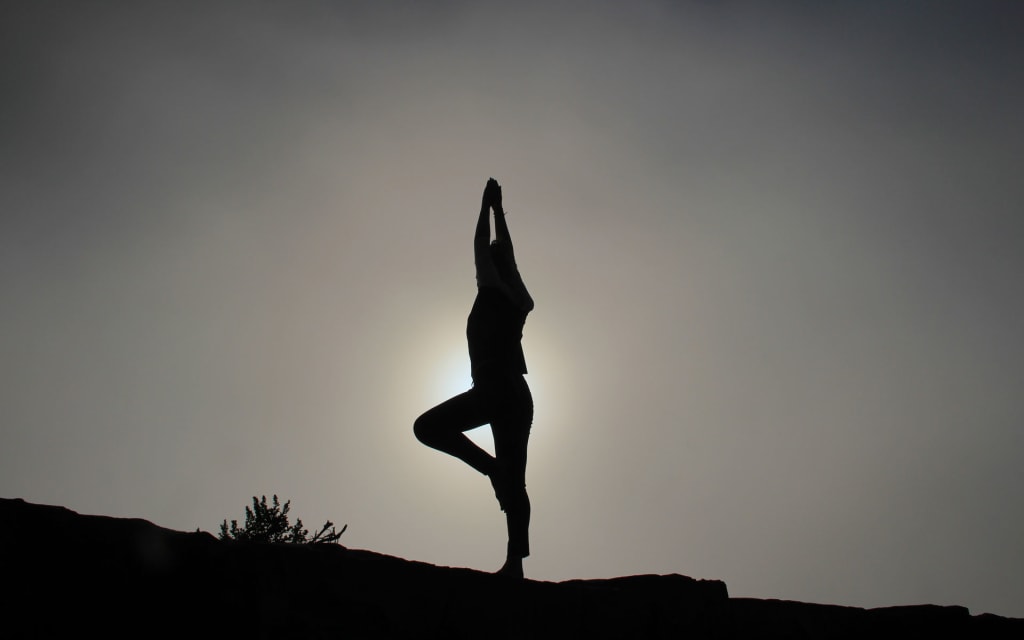What is Hatha Yoga?
Hatha means union and yoga means life energy. Hatha Yoga unites the mind and the body.

While exercise fads sweep the country yearly, encouraging intelligent people to do the strangest things, there is one exercise system that has maintained an enthusiastic following for over 6,000 years: hatha yoga. This system employs techniques western physiotherapists are still just exploring: the stimulation of internal organs, nerves, and muscles through a number of unique postures combined with deep rhythmic breathing. The exercises evolved from the yogic belief that no man is healthy unless his heart, lungs, liver, nerves, eyes, glands, hearing and so forth are functioning correctly. A man with well developed muscles is not necessarily healthy — he can easily succumb to a kidney or nerve ailment. Consequently, the ancient yoga postures were devised to stimulate individual organ and nerve groups. A healthy mind relies on a healthy body.
Yoga Increase the Brain's Blood Supply

Photo by Matthew Kane
For instance, the spine is a major center of attention, with a number of postures designed to stimulate its lower, mid, and upper regions. The purpose is to draw blood to this vital nerve area, which in turn stimulates the entire nervous system. Other postures, such as the Camel pose (Ustrasana in Sanskrit) affect the thyroid glands, and the pelvic organs, with particular emphasis on the gonads. The famous head-standing postures increase the brain's blood supply. Though seemingly sedentary, yoga is just as capable of imparting stamina as vigorous Western exercises.
Yoga Systematically Stretches the Body

Photo by Aral Tasher
Yoga also differs strikingly from western exercise in its actual performance. Instead of violent exhausting motions of muscle groups, it systematically stretches the body, leaves it for a few seconds in unique posture, then gently allows it to relax. Each posture, refined over the ages, is based on the movements of animals. The old masters realized that man, despite his rational mind, is basically an animal and when healthy should be able to relax completely and remain comfortably motionless as animals do for long periods. Thus, many of the yoga postures were named after creatures they imitate :Lion, Peacock, Camel, Fish, Cat.
Deep rhythmic breathing is important. The yoga student learns an entirely different system of breath control, similar to the way we breath during deep sleep. This he couples with each exercise for maximum threefold effect. First, deep breathing richly oxygenates the blood, which in turn provides a stronger stimulus to the area being exercised. Second, skillful breathing allows the yoga student to stretch more and maintain the position longer. Third, breathing produces a calmness and concentration of mind that is closely akin to meditation. Consequently, there is no strenuous activity while performing yoga. If anything, the yogi’s heartbeat and rate of breathing have slowed markedly after completing the exercises.
Spiritual Training

Photo by Dmitry Kotov
Despite this seemingly sedentary approach, yoga is just as capable of imparting stamina as the more rigorous western exercises. Few people needed stamina more than the monks who developed it. Spiritual training then, as it still is in India, is rigorous. The monks get up at sunrise and bathe in ice-filled streams — an undertaking they consider would not be possible if they hadn't strengthened their bodies first through yoga.
Hatha means union and yoga means life energy, and the exercises are concerned with reuniting the man and his interior vitality. The so-called involuntary processes — respiration, circulation, digestion, and elimination – are gradually normalized. Anyone prone to headaches, nervous tension, weight problems, sleeping difficulties, and dozens of other common ailments can expect to be helped. Even those in good shape will benefit because yoga fine-tunes the body, opening up new levels of health and physical fitness.
About the Creator
Izzy Erlich
Upstate New Yorker, who loves to travel to Colorado and Vancouver. Certified Yoga instructor.
Enjoyed the story? Support the Creator.
Subscribe for free to receive all their stories in your feed. You could also pledge your support or give them a one-off tip, letting them know you appreciate their work.






Comments
There are no comments for this story
Be the first to respond and start the conversation.